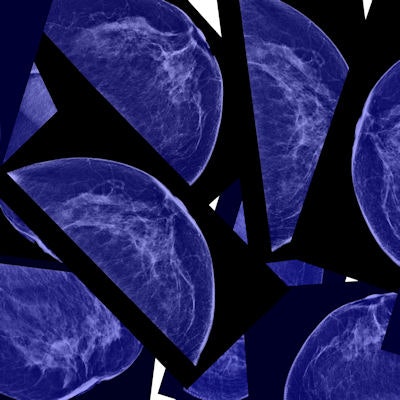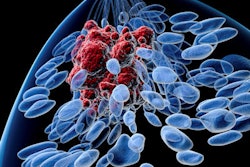
Although synthesized 2D mammography has been cleared by the U.S. Food and Drug Administration (FDA) to be used as a replacement for conventional 2D mammography when used with digital breast tomosynthesis (DBT), its adoption hasn't quite taken off, according to research presented April 4 at the Society of Breast Imaging (SBI) annual meeting in Hollywood, FL.
The study, conducted in the form of a survey of SBI members, suggests that there's work to be done to address particular concerns DBT users have about synthesized 2D mammography, presenter Dr. Samantha Zuckerman of the University of Pennsylvania in Philadelphia told AuntMinnie.com via email.
"We've heard anecdotally that breast imagers are still using digital mammography with DBT instead of synthesized 2D mammography because of concerns regarding its image quality, particularly detection and characterization of calcifications," Zuckerman said.
Zuckerman's group sought to evaluate whether breast imagers were using synthesized 2D mammography with DBT, and if not, why. The group conducted an online survey in June 2018 that included questions about members' practice type, the number of screening mammograms read per year, the percentage of mammograms acquired using DBT and synthesized 2D mammography, years of DBT and synthesized 2D mammography use, perception of cancer detection rates and recall rates using synthesized 2D mammography, and attitudes about synthesized 2D mammography.
Of 2,600 SBI members, 312 responded, for a rate of 12%. Of these, 96% reported DBT capability in their practices, and 80% reported having the capability to perform synthesized 2D mammography.
Despite this high percentage of DBT capability, only 40% of survey participants reported using synthesized 2D mammography for all DBT screening exams. Average overall satisfaction with synthesized 2D mammography was rated at 3 on a scale of 1 to 5.
Of the survey participants, 85% cited reduction in radiation dose, and 27% cited lesion visibility as benefits of using synthesized 2D mammography. But survey respondents also listed a few disadvantages of the technology, including calcification characterization (61%) and decreased image quality (31%).
As for participants' perception of changes in cancer detection and recall rates, Zuckerman's team found mixed results.
| Perceptions of synthesized 2D mammography compared with conventional mammography | ||
| Respondent perception | Change in cancer detection rate | Change in recall rate |
| Unsure | 44% | 30% |
| Stable | 34% | 33% |
| Increase | 21% | 6% |
| Decrease | 1% | 31% |
Using synthesized 2D images with DBT reduces radiation dose while maintaining the benefits of acquiring 2D images along with 3D ones. Although the majority of breast imaging sites that have DBT also use synthesized 2D mammography, synthesized 2D mammography just hasn't taken off as expected, Zuckerman told AuntMinnie.com. However, this could change as the technology matures.
"As synthesized 2D mammography continues to improve, new iterations of the technology may alleviate concerns about image quality and calcifications," she said.




















